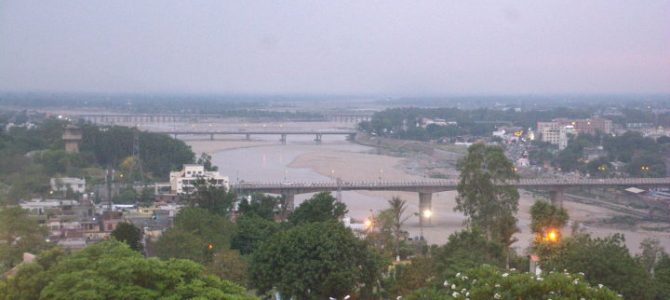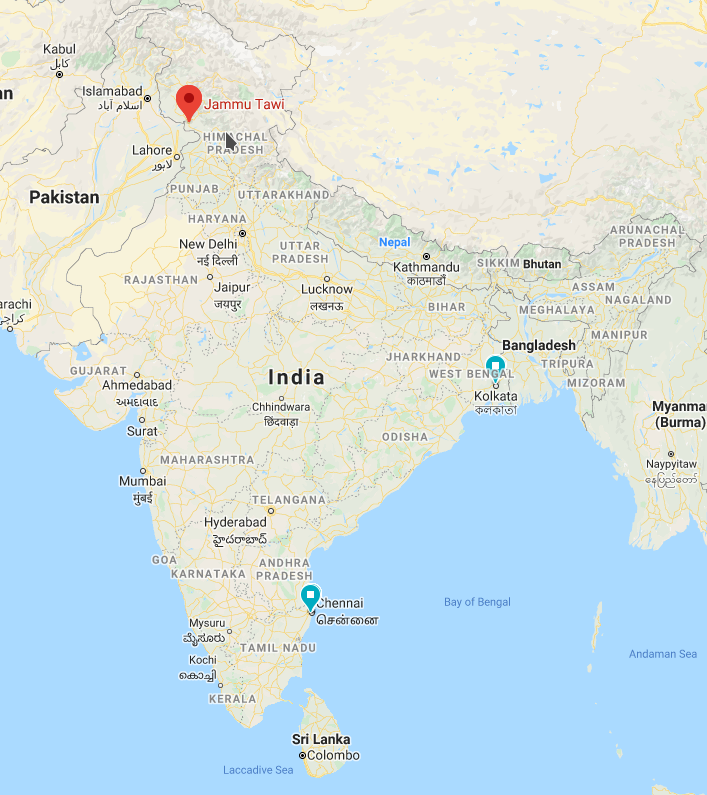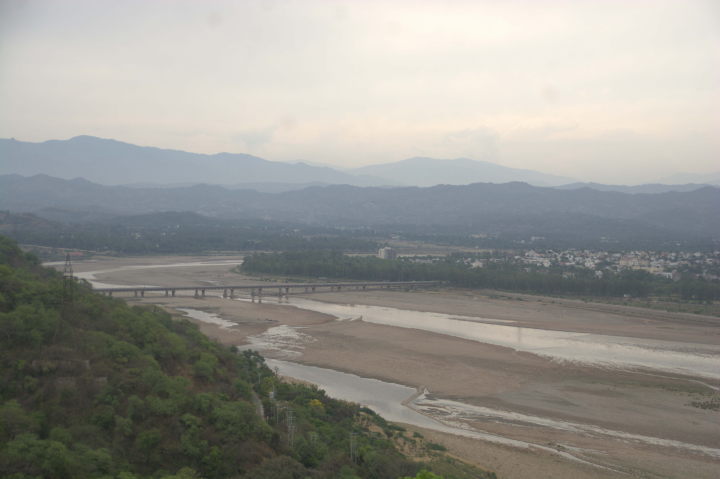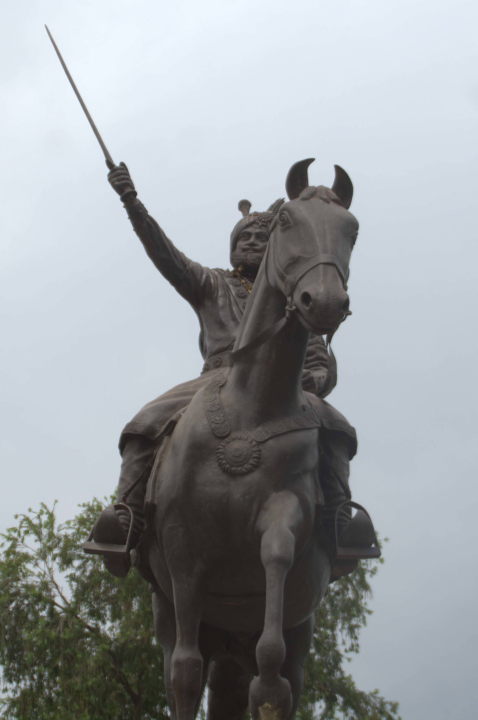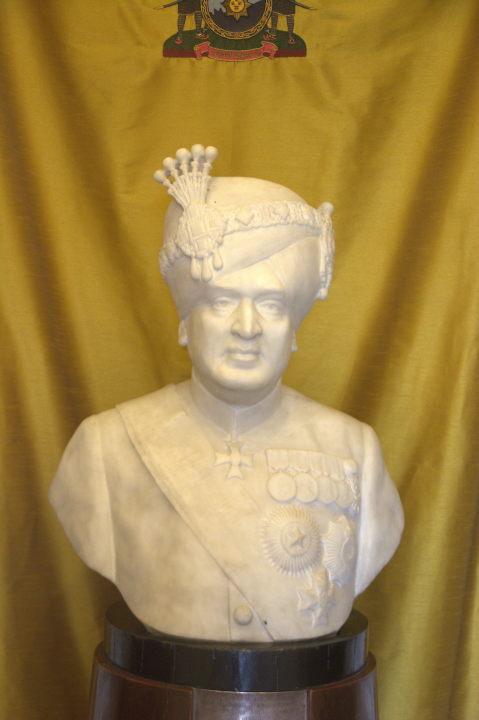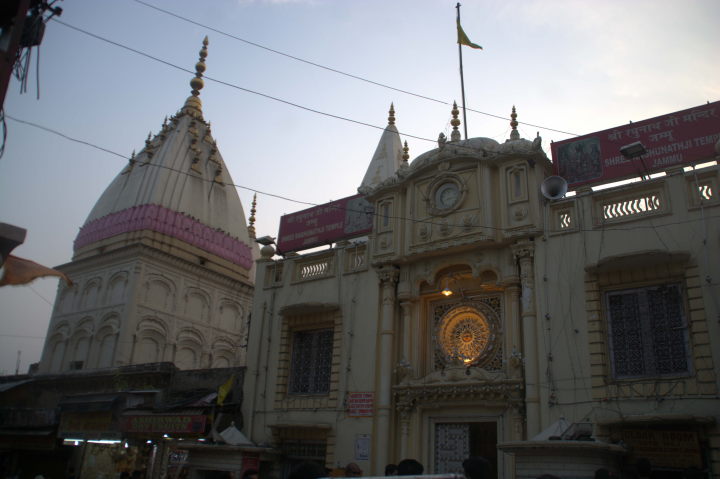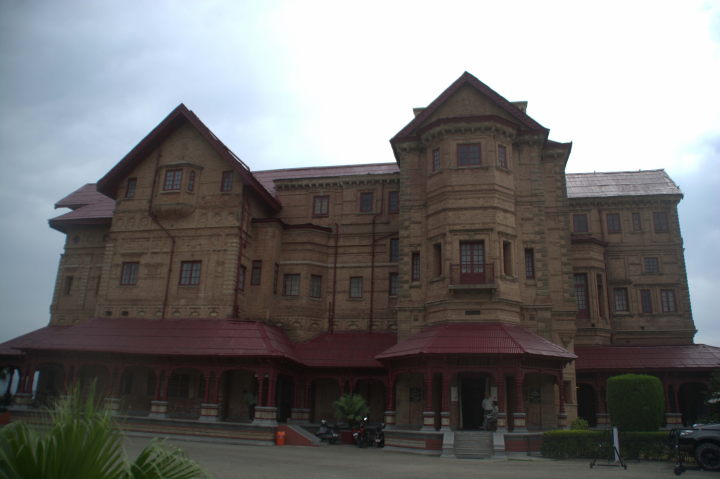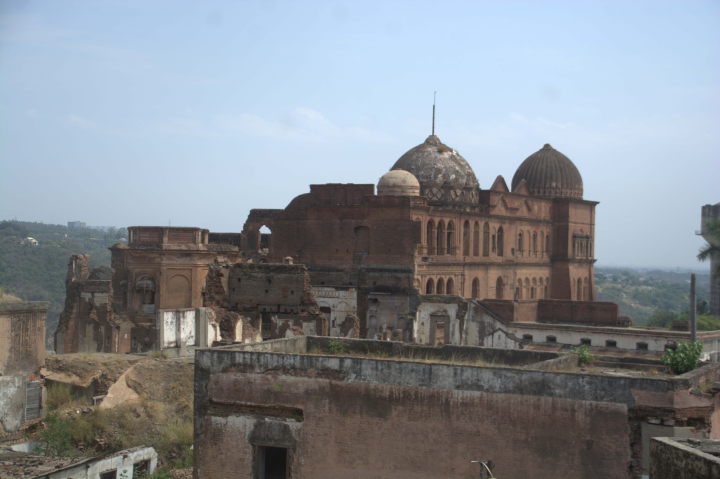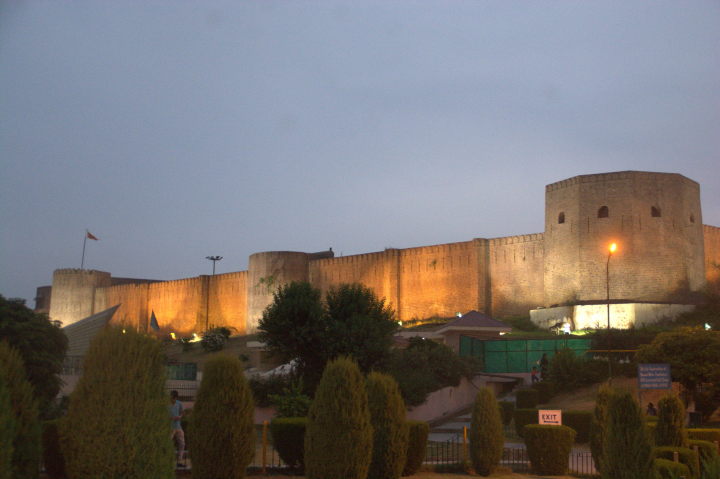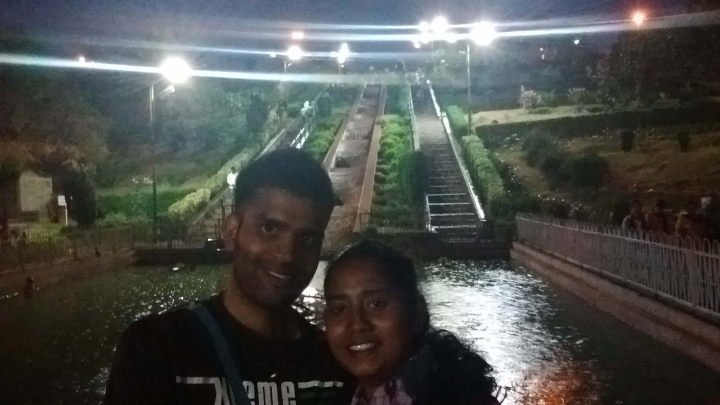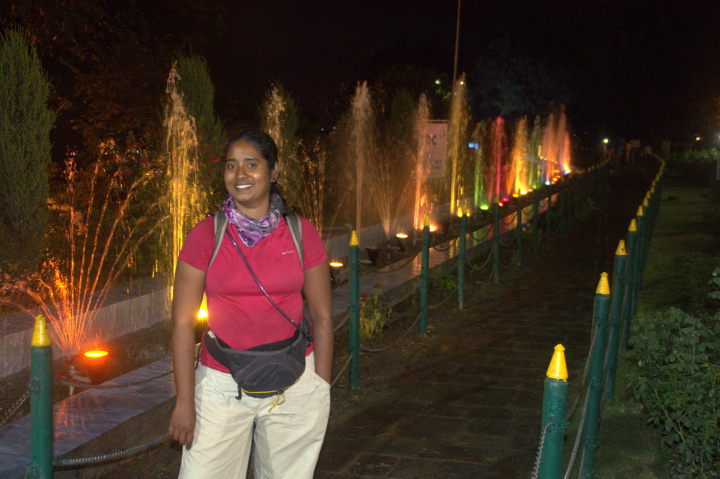For those who aren’t familiar with Jammu Kashmir, there are two distinct regions in the union territory. A third region, Ladakh, is a neighbouring union territory. The three regions were part of the same state named Jammu Kashmir upto 2019. The southern side of the UT, i.e. Jammu region, is culturally very distinct from Kashmir valley. It is only because of an influential ruler and his territorial expansion that the three regions were part of the same kingdom and after the formation of the Indian republic, part of the same state. In this post, we will have a look at Jammu city, the seat of the afore-mentioned influential rulers of the Dogra dynasty due to whom the distinct regions of Jammu, Kashmir and Ladakh have been in the same state for so long.
Video on Jammu
The contents of this blog post are available as a video. If you prefer watching videos, here you go.
Geography of Jammu city
Jammu is located at the north-western corner of India, and in the south-western corner of the union territory itself. The city is on both the banks of Tawi river, with the southern bank being the newer part of the city, and the northern bank being the heritage part. Jammu is very close to the Punjab border. No major city in Jammu Kashmir is as close to Jammu as Pathankot, which is in the neighbouring state of Punjab.
While most people who have never seen Jammu Kashmir, mistakenly think of Jammu as a hill station, the city is actually on the flat plains of Tawi river banks. The city is on the same terrain as Punjab state. The nearest hills, Trikoot, are more than 30 km away. The nearest commercial hill station Patnitop is 120 km away. The hills seperating Jammu region from Kashmir valley are nearly 200 km away.
While Srinagar is the official capital of the union territory, due to its strategic location, that city faces heavy snowfall during winter. The assembly shifts to Jammu for four months. Thus Jammu is also termed as the winter capital of J & K.
People of Jammu
Jammu, though in a different state, seems like an extension of Punjab. If you alight at Jammu Tawi railway station or the city’s bus depot and speak to people, you will not realise that you have left Punjab behind. You will hear the same Punjabi-accented Hindi and will see plenty of people wearing turbans. The people of Jammu are culturally identical to those of Punjab.
Religion is where the three regions of the erstwhile kingdom are very distinct. While Kashmir is mostly Muslim and Ladakh mostly Buddhist, Jammu region is predominantly Hindu since that was the religion of the most influential dynasty of Jammu, i.e. the Dogras. Because Jammu was carved out of Punjab, there is a sizeable population of Sikhs in the city too. Hindi and Punjabi are the most commonly spoken languages in Jammu. Knowledge of English is fairly widespread. There are traces of other languages which flourished in the region, such as the language native to the Dogras. The Muslims in Jammu speak Urdu, which sounds exactly like Hindi, but uses the Arabic script instead of Devnagari. Today, Jammu is also home to several Hindu Kashmiri Pandits.
The main occupation in jammu is selling merchandise, such as dry fruits and nuts, saffron and Kashmiri handicrafts. Jammu’s main market, the Hari market, is what provides livelihood to most of Jammu’s people. Joining the army is a respected and often followed occupation in Jammu as well. If people do not start their own enterprise, then they prefer working in government jobs, such as the district offices or the J & K bank. While the city is mostly residential, Jammu is taking its tourism more seriously. This is because several pilgrims bound for Maa Vaishnodevi temple at Katra, 75 km away, use the Yatri Niwas lodges at Jammu to stay in the city and explore it for a day or two.
History of Jammu
Jammu’s most influential dynasty, the Dogras, stuck firm to the state until independence. While initially siding with the British to defeat the Sikhs in Punjab during the Anglo-Sikh wars, the Dogras were fierce warriors and even the British could not overcome them when they tried to attack and annex Jammu. The first ruler, Raja Gulab Singh, established the Dogra dynasty after defeating the Sikhs and carving out a part of Punjab for himself, thus creating Jammu region. Later he defeated and annexed Kashmir from its Sultans. Finally, he conquered a part of western Tibet kingdom to form present day Ladakh.
During Indian independence, the last ruler Raja Hari Singh was invited to be part of India. He stepped down from the throne and decided to join the union of India. He even decided to join the politics with the Indian National Congress. He signed off his palace and personal riches as national heritage. Even today, the Dogra descendents are influential members from various constituencies in Jammu region. They are representatives from different political parties.
Now let’s see what you can do is present day Jammu.
Hari market
Named after the last ruler of the Dogra dynasty, Raja Hari Singh, this bustling market is where you can find and buy dry fruits and nuts at a fraction of the price that you pay at major cities like Delhi, Mumbai or Bengaluru. This is because the nuts are locally grown and the cost of middlemen and transportation is yet to be added. While saffron is not as cheap as the prices you pay in Kashmir valley, you can still get it for much cheaper than what you’d pay in any metro city. But if you are proceeding to Kashmir, then avoid buying saffron at Jammu. Also, consider buying dry fruits like dry apples, dry apricots, figs or anything that’s grown locally. You won’t find raisins for cheap here, because most raisins are shipped from Nashik.
Also in Hari market are shops selling Kashmiri products like Pashmina shawls, blankets, carpets, woollen products, walnut wood furniture and woodwork. But resist buying those from Jammu, if you are are also planning to visit Kashmir.
The merchants at Jammu are more than happy to let you sample pieces of their valuable dry fruits and nuts for no cost. It doesn’t matter even if you don’t buy from them. But if you do buy, consider buying in bulk to take advantage of the much lower price. Another convenient feature is that most shops offer ‘drop-shipping’, i.e. they will ship to any address in any city within India. Instead of visiting Jammu, you can simply place an order over phone, wire the money electronically and Jammu’s quality products will just appear at your doorstep.
Raghunath temple
In the centre of the city, in the midle of Hari market, is the Raghunath temple, a complex of temples dedicated to several deities. There are 300 idols inside the complex, but most of the them are dedicated to the lives of Lord Rama and Lord Krishna. The chief deity in the biggest and the centrally located sanctum is Lord Rama or Raghuvansha Raja (the king of the Raghu clan), and hence the name Raghunath (The God from Raghu clan).
Amar Mahal
During their tenure, the Dogras lived in two palatial complexes, with the second one being a spartan version of the first one. Overlooking the Tawi river, the new palace was handed over to the Jammu Kashmir government by Raja Hari Singh. Despite being underwhelming compared to the the older complex, the new palace is still luxurious, although smaller. The palace is now a museum and is surrounded by several manicured lawns, rose gardens and flower beds.
Mubarak Mandi
This is the larger, but dilapidated older palace complex, also overlooking the river. Though crumbling, one can still see how the complex must have been during happier days. The government is taking necessary steps to rebuild and restore the structures to their old glory. The complex has several buildings including official quarters, darbars, performance halls and residential rooms. One of the buildings has been repurposed to host the Dogra museum, which describes the history of Dogras and their patronage of several art forms.
Bahu fort
While Amar Mahal, Hari market and Mubarak Mandi are part of heritage Jammu to the north of Tawi river, Bahu fort is a fort complex on the southern bank, overlooking the palaces and the heritage city. The view from the fort walls are probably beautiful? Probably? Yes, because you’ll never get to see it. The walls of the fort have been fenced off from civilians and the only reason to enter the fort is to visit the Maata Mahakali temple inside its complex.
Bagh-e-Bahu
Bagh-e-Bahu is a Mughal style garden in the vicinity of Bahu fort. The garden is built over a slope and is hence terraced with multiple levels, thus allowing easy water circulation and irrigation. The upper entrance to the park is from outside Bahu fort, while the lower entrance is on Bahu road, a road that leads from Jammu Tawi railway station to Bahu fort. The garden has manicured lawns, floral beds and plants cut in various shapes. After dusk, there is a colourful fountain show.
- Terraced gardens at Bagh-e-Bahu
- Fountain show at Bagh-e-Bahu
Tawi riverside
Both the north and the south of the city have several walkways and Ghats approaching the Tawi river. These are great for walks in the morning and in the evening to watch the sunrise and sunset.
What to shop for
Jammu is the best place to buy dry fruits and nuts, especially walnuts. As mentioned before, you don’t even need to carry them with you since the merchants drop ship to your address. Kashmiri handicrafts are also sold in Jammu, but if you are also travelling to Kashmir, then it’s better to check with Srinagar’s floating Meena market first, since they offer a cheaper price for the same quality.
Getting to Jammu
Jammu is an extremely well-connected city despite its remoteness. There are several options to reach the city.
By Air
Jammu airport is a major airport in India and is well-connected. Several flights from major Indian cities connect to Jammu, with the most frequent flights being from New Delhi, Mumbai and Chandigarh.
By Train
Jammu Tawi railway station, belonging to Northern Railways, has trains to virtually every corner of the country, i.e. to every place in India that has a broad-gauge tracked railway station. The number of trains has increased due to the extension of the railway line upto Maa Vaishnodevi Katra, a major pilgrimage centre. The line is being extended further to connect to the existing Banihal – Srinagar – Baramulla route, thus realising a long term Indian Railways dream of running a train from the shores of Kanyakumari to the base of the snowy peaks of the Himalayas.
Today, it is possible go from Jammu Tawi to Kanyakumari in a single train. The Himsagar express (meaning the snow and sea), that runs from Katra to Kanyakumari, covers 3727 kilometres over 72 hours. The same train will truly become Himsagar after the connection between Katra and Banihal is completed and train’s route is extended to Srinagar.
By Road
Jammu’s bus depot is well connected to several north Indian cities. J & K state buses run between Jammu and Srinagar. Buses to other major cities include Punjab state transport and Haryana state transport buses to New Delhi, Chandigarh, Pathankot, Ambala and Amritsar. Himachal state buses run to Dharamsala, Dalhousie and Manali.
Self-drive
Jammu lies on India’s most arterial highway, i.e. Grand Trunk, that runs from Kanyakumari to Srinagar. The highway goes like so: Srinagar – Anantnag – Nashiri – Chainani – Udhampur – Jammu – Pathankot – Jalandhar – Ludhiana – Chandigarh – Ambala – Kurukshetra – Panipat – New Delhi – Mathura – Agra – Gwalior – Jhansi – Bhopal – Nagpur – Hyderabad – Kurnool – Anantapuram – Bengaluru – Hosur – Dharmapuri – Salem – Namakkal – Trichy – Madurai – Tirunelveli – Nagercoil – Kanyakumari. You can join this highway from several major cities in India.
Conclusion
Jammu is not a very well-known or well-understood city as most Indians who haven’t seen it assume it to be quite different from what it really is. But Jammu has such as rich history to offer and so many things to see that we at India 360 were quite impressed and don’t mind coming back for more, especially for the whole walnuts 🙂

